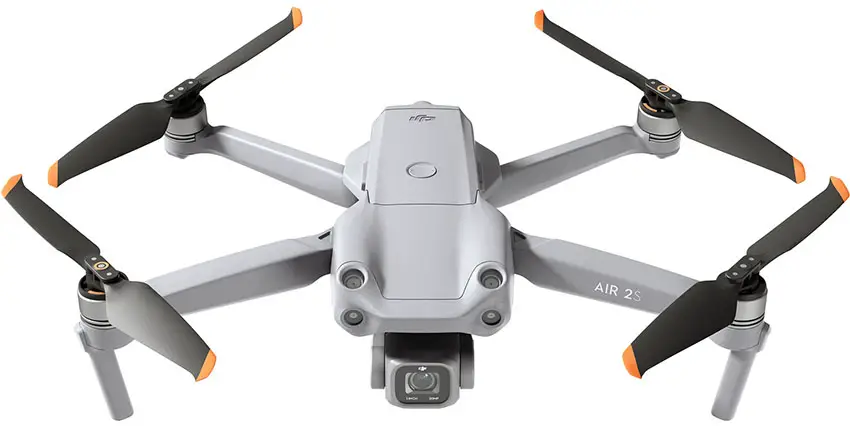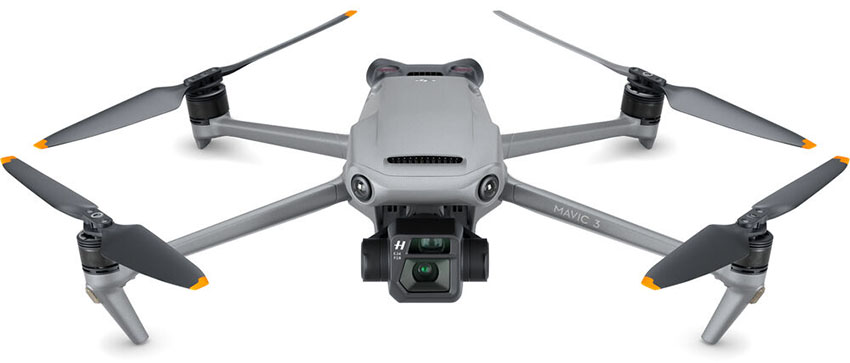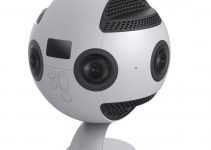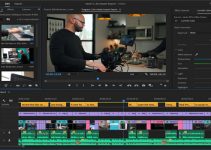With the long-awaited Mavic 3 from DJI finally released, it’s time to redo all those comparisons and buying guides as you search for your next drone. DJI’s lineup has been almost entirely overhauled in the past year, and while things are now clearer, it doesn’t make it easier to choose one when all the options are so good.
In particular, the Air 2S is still an incredible option even with the Mavic 3 coming in with some huge upgrades. If you are looking for a drone to buy, and whether the Mavic 3 is worth the extra money over something like the Air 2S, then this comparison by YouTubers Stewart and Alina is worth your time.
Sticker shock is probably the first thing most will notice about these drones. They aren’t cheap. Even the affordable Air 2S runs $999 while the Mavic 3 runs $2199. Tack on accessories or the Fly More Combo and you are spending $1,299 and $2,999, respectively. The Fly More Combo is well worth it. We aren’t even touching on the Mavic 3 Cine which costs an eye-watering $4,999.
Likely, the biggest reason for the jump in price is the camera technology and image sensor. The Air 2S uses a 1” sensor while the Mavic 3 upgraded to a 4/3” chip. Also, the Mavic 3 has two cameras, more on that later though. Other Mavic improvements include a 46 minute flight time compared to 31 minutes, a slightly faster max speed of 47 mph (75.6 kph), and better handling in wind.

Image Credit: DJI
For transmission, both the Air 2S and Mavic 3 got a boost, though while the Air has OcuSync 3, the Mavic gained a slightly better 3+. These both have incredible ranges of 12 km and 15 km, respectively. And unless you are pushing the limits you will likely just always have solid signal.
Obstacle avoidance is an area where the Mavic 3 takes the lead. The Mavic 3 has full obstacle avoidance on every side.
Back to cameras, the Mavic 3 happens to have a second 7x tele camera with a 1/2” sensor. This can be a super useful tool for shooters. It does have some limitations though, such as a limit of 4K at 30p and only having automatic exposure. This is also just a single click zoom of either 1x or 7x, not a smooth range. Nice to have, but a bit odd.
Getting into the main cameras we have a 1” on the Air 2S with a 22mm lens and a 4/3” sensor on the Mavic 3 with a 24mm lens. The Air 2S also has a fixed aperture of f/2.8 while the Mavic 3 has a range of f/2.8-11. For resolution, the Mavic 3 has a slightly odd 5.12K x 2.7K aspect with frame rates up to 50p.

Image Credit: DJI
The Air 2S for comparison has a 5472 x 3078 resolution. As for 4K shooting, the Air 2S will do 4K 60p while the Mavic 3 bumps up to 4K at 120p. And, both shoot 20MP photos.
Taking a deeper look at picture quality you are getting something interesting. The Mavic 3 seems to capture much flatter images than the Air 2S, though it is unclear whether this provides any benefit. Where the Mavic 3 does seem to win is in low-light performance and color rendering. The larger sensor and Hasselblad optics are responsible for that.
For the vast majority of people, the Air 2S is plenty of drone, it is essentially the older Mavic 2 Pro in a newer body. The Mavic 3 is without a doubt the best of the best if you have the cash to spend.
Which drone would you get?
[source: Stewart and Alina]
Order Links:
- DJI Air 2S Drone (B&H, Amazon)
- DJI Mavic 3 Drone (B&H, Amazon)
- DJI Mavic 3 Cine Premium Combo (B&H, Amazon)
Disclaimer: As an Amazon Associate partner and participant in B&H and Adorama Affiliate programmes, we earn a small comission from each purchase made through the affiliate links listed above at no additional cost to you.
Claim your copy of DAVINCI RESOLVE - SIMPLIFIED COURSE with 50% off! Get Instant Access!





